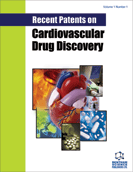Abstract
Chronic stable angina affects 6-7 million Americans and contributes to a significant reduction in quality of life and life expectancy. Current pharmacotherapy for reducing episodes of exertional angina includes β-blockers, calcium channel blockers and long-acting nitrates. Patients may have contraindications to the use of one or more of these agents or be unable to tolerate initial or larger therapeutic doses. As a result of the inability of current management strategies to optimally control episodes of chronic angina, new therapies have been investigated that do not have some of the limitations of current therapies. New therapies for chronic stable angina are based on a mechanism involving membrane current such as the funny current and the late Na current.
Ranolazine (Ran) is an antianginal drug acting on I(Na). After its current indication in the chronic stable angina, the role of this molecule is still being studied for prophylaxis of certain arrhythmias and treatment of heart failure. Moreover, have been recently developed new interesting patents of novel pharmaceutical effects and derivates of Ran.
Keywords: Angina pectoris, atrial fibrillation, coronary disease, ranolazine, ANTIANGINAL EFFECTS, ARRHYTHMIAS, Heart Failure, microembolization, CCBs, CSA
 4
4


